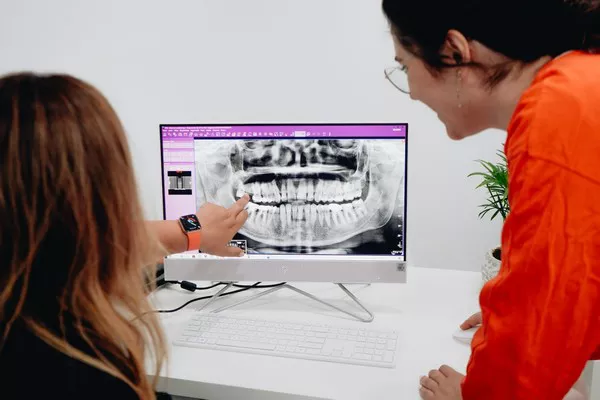Gingivitis and periodontitis are two common types of gum disease that affect millions of people around the world. While they share some similarities, there are some key differences between the two conditions. In this article, we will discuss how to differentiate between gingivitis and periodontitis and the symptoms, causes, and treatments for each.
What is Gingivitis?
Gingivitis is a mild form of gum disease that is caused by the buildup of plaque on the teeth. Plaque is a sticky substance that forms on the teeth as a result of bacteria in the mouth. When plaque is not removed through regular brushing and flossing, it can irritate the gums and cause inflammation. This inflammation is known as gingivitis.
Gingivitis is characterized by red, swollen, and bleeding gums. Other symptoms of gingivitis may include bad breath and a receding gum line. Gingivitis is generally reversible with proper dental care, including regular brushing and flossing, as well as routine dental cleanings.
What is Periodontitis?
Periodontitis, also known as periodontal disease, is a more serious form of gum disease that can cause significant damage to the teeth and surrounding tissues. Like gingivitis, periodontitis is caused by the buildup of plaque on the teeth. However, in periodontitis, the infection has spread beyond the gums and into the bone and supporting tissues that hold the teeth in place.
Periodontitis is characterized by deep pockets that form between the teeth and gums, which can trap food particles and bacteria. Over time, these pockets can become infected, causing the gums to recede and the teeth to become loose. If left untreated, periodontitis can lead to tooth loss and other serious health complications.
How to Tell the Difference
While both gingivitis and periodontitis are caused by the buildup of plaque on the teeth, there are some key differences between the two conditions. Some of the ways to differentiate between gingivitis and periodontitis include:
Symptoms:
Gingivitis is typically characterized by red, swollen, and bleeding gums. Other symptoms may include bad breath and a receding gum line. Periodontitis, on the other hand, may cause deep pockets to form between the teeth and gums, which can trap food particles and bacteria. Over time, these pockets can become infected, causing the gums to recede and the teeth to become loose.
Severity:
While gingivitis is a mild form of gum disease that is generally reversible with proper dental care, periodontitis is a more serious condition that can cause permanent damage to the teeth and surrounding tissues if left untreated.
Treatment:
Treatment for gingivitis typically involves professional cleanings and improved oral hygiene habits, such as brushing and flossing regularly. In contrast, treatment for periodontitis may involve deep cleaning procedures, such as scaling and root planing, as well as surgical intervention in severe cases.
Causes:
Both gingivitis and periodontitis are caused by the buildup of plaque on the teeth. However, periodontitis is often associated with other risk factors, such as smoking, genetics, and certain medical conditions.
Risk Factors
Several factors can increase your risk of developing gingivitis or periodontitis. These risk factors include:
Poor Oral Hygiene: Failing to brush and floss regularly can allow plaque to build up on the teeth, leading to gingivitis and periodontitis.
Smoking: Smoking can weaken the immune system and increase the risk of gum disease.
Genetics: Some people may be more susceptible to gum disease due to genetic factors.
Medical Conditions: Certain medical conditions, such as diabetes, HIV/AIDS, and cancer, can increase the risk of gum disease.
Poor Nutrition: A diet lacking in essential nutrients can weaken the immune system and increase the risk of gum disease.
Treatment Options
The treatment options for gingivitis and periodontitis vary depending on the severity of the condition. Some common treatment options include:
Professional Cleanings: Regular professional cleanings can help remove plaque and tartar buildup from the teeth and prevent gum disease from progressing.
Scaling and Root Planing: This deep cleaning procedure involves removing plaque and tartar from below the gumline and smoothing out rough spots on the roots of the teeth to prevent further buildup.
Antibiotics: Antibiotic therapy may be prescribed to help kill bacteria and reduce inflammation in the gums.
Surgical Intervention: In severe cases of gum disease, surgical intervention may be necessary to repair damage to the teeth and surrounding tissues.
Related Topics:





























